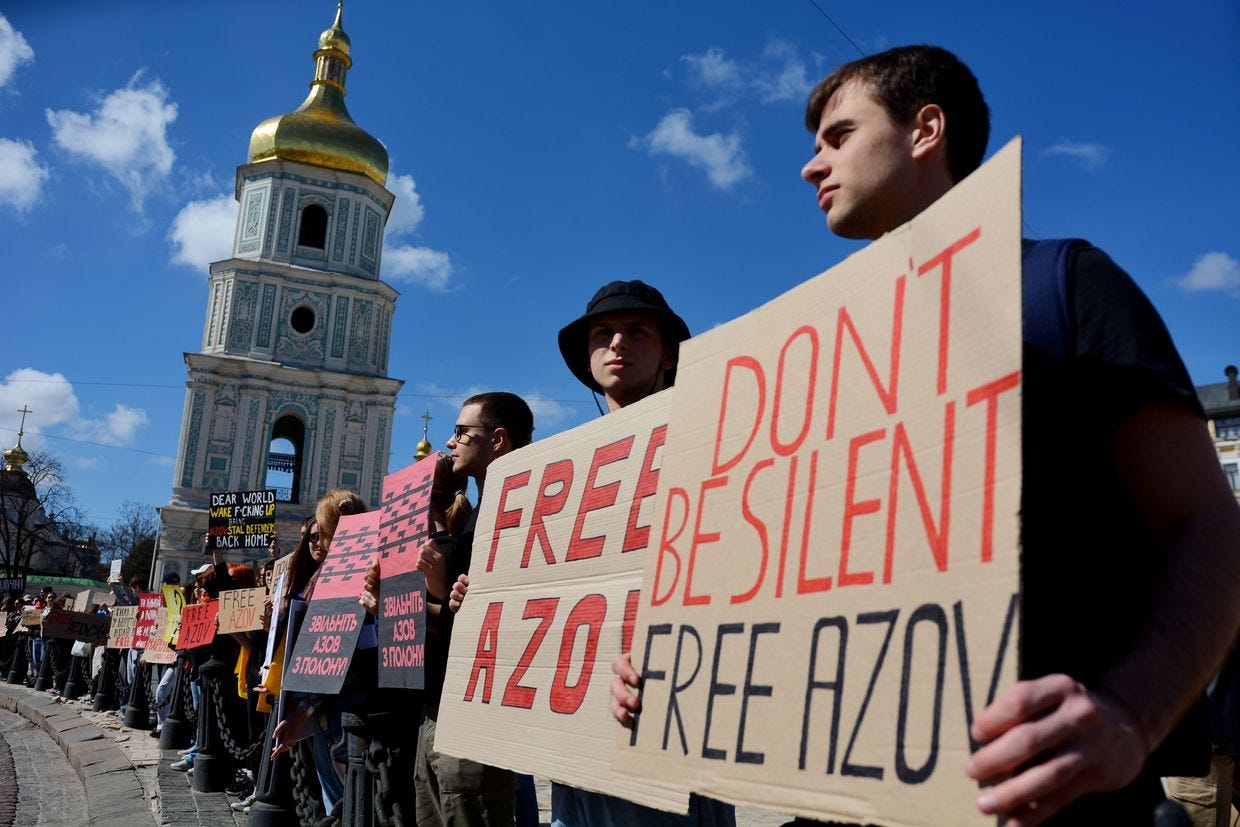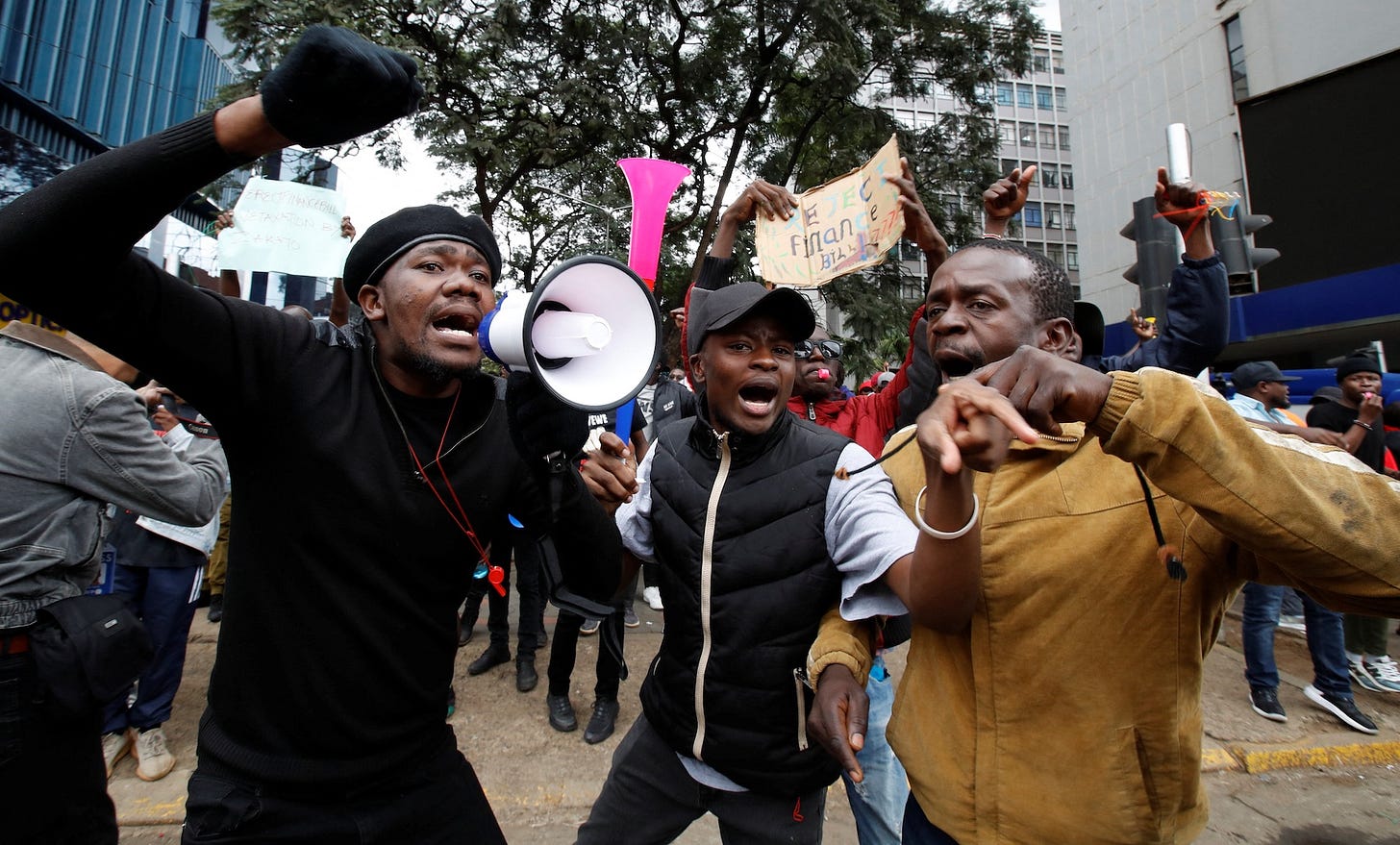This week’s briefing covers three major disinformation campaigns shaping global events.
In the India-Pakistan conflict, both sides are engaged in aggressive information warfare, with viral misinformation and recycled footage fuelling panic and confusion following recent military strikes.
Meanwhile, Russian state media continues to exploit videos of Ukrainian prisoners of war to spread falsehoods aimed at demoralizing Ukraine and manipulating international opinion.
At the same time, coordinated right-wing campaigns in Kenya are flooding social media with anti-gender and anti-LGBTQ+ disinformation, deepening social divides and targeting marginalized communities.
We break down the facts, impacts, and tactics behind these ongoing information operations and cognitive warfare.
Viral Misleading Posts Flood Social Media During India-Pakistan Crisis
🗓️Context:
On May 7, 2025, India launched "Operation Sindoor," striking terror targets in Pakistan and Pakistan-administered Kashmir, sharply raising tensions.
Both countries have a history of information warfare during conflicts, with state-linked actors often spreading false or misleading content to influence public opinion.
Pro-Pakistan actors aimed to flood social media with false claims to confuse audiences and stir anger, while Indian fact-checkers worked to expose fakes.
📌 What Happened:
After the strikes, pro-Pakistan social media accounts and officials spread false videos and images, claiming Indian military defeats.
Misleading posts included old footage from unrelated conflicts, such as Israeli airstrikes in Gaza and the 2020 Beirut explosion, shared as if from the India-Pakistan conflict.
A viral image of a crashed Indian Rafale jet was actually from a 2021 MiG-21 crash. Pakistani ministers amplified these false claims, adding false credibility.
⚡ The Fallout:
Millions saw these misleading posts, increasing fear and hostility between Indian and Pakistani audiences. Fact-checkers and officials struggled to counter the flood of false information.
The disinformation damaged trust in official sources and risked escalating tensions by stirring public outrage.
🔍 The Narrative Behind It:
This was a deliberate disinformation campaign using recycled and fabricated content to control the narrative during a crisis with a clear intent. It relied on emotional visuals, social media algorithms, and official endorsements to spread quickly.
The campaign aimed to confuse people, erode trust, and exploit cognitive biases during a tense moment. It shows how social media can amplify falsehoods and deepen conflicts through psychological manipulation.
📝Information Effects Statement Assessment:
Pakistani state-affiliated actors and pro-Pakistan influencers are assessed with high confidence to have led a coordinated campaign spreading recycled and fabricated content to falsely portray Indian military losses.
This effort exploited social media algorithms and official endorsements to manipulate regional perceptions and fuel animosity. Confidence is high, supported by multiple fact-checks, official denials, and clear attribution of intent and methods.
Sources:
Carnegie Endowment: Indian Airstrikes in Pakistan: May 7, 2025
Al Jazeera: Operation Sindoor: What’s the significance of India’s Pakistan targets?
Time: Pakistan Vows to ‘Settle the Score’ Against India After Missile Attack: What to Know
Russia uses videos of Ukrainian POWs to fuel disinformation campaign

🗓️Context:
Since Russia’s invasion of Ukraine in 2022, Russian authorities have tightened censorship and seized control of nearly all domestic media, flooding the Russian information space with pro-Kremlin narratives and suppressing independent war reporting.
Russian state media, propagandists, and affiliated web brigades have systematically spread disinformation to justify the invasion.
📌 What Happened:
Russian state media and affiliated channels circulated videos of captured Ukrainian POWs, often showing them under duress or making forced statements.
These videos were used to push false claims about Ukrainian military collapse, alleged war crimes by Ukraine, and to suggest high rates of surrender, aiming to demoralize Ukrainian forces and civilians.
Some videos were staged or selectively edited, while others were accompanied by disinformation campaigns targeting POW families-pressuring them for cooperation or spreading lies about prisoner exchanges.
⚡ The Fallout:
The widespread use of POW videos and related disinformation has deepened fear and confusion among Ukrainian families, pressured relatives to cooperate with Russian authorities. Furthermore, it has fuelled false narratives about the war’s progress for the local population.
In Russia, these tactics reinforce state propaganda, making independent verification nearly impossible. Internationally, the campaign undermines trust in official Ukrainian statements and complicates prisoner exchange negotiations, while also destabilizing support for Ukraine in regions susceptible to Russian influence.
🔍 The Narrative Behind It:
Russia’s use of POW videos is a psychological warfare tactic. This leverages forced confessions, staged footage, and emotional manipulation in order to weaken enemy morale and sow doubt with the target population.
This practice exploits censorship, media control, and algorithmic amplification to drown out facts and create an environment where truth is hard to discern.
Disinformation is tailored for different audiences. First it aims to demoralize Ukrainians. Secondly, it aims to justify the war to Russians, and swaying neutral or pro-Russian sentiment locally and globally.
📝Information Effects Statement Assessment:
Russian state media and affiliated actors are assessed with high confidence to have orchestrated a disinformation campaign using manipulated POW videos to demoralize Ukrainian society, pressure families, and legitimize Russia’s invasion.
These actions exploit media control and psychological tactics to undermine Ukrainian resistance and shape international perceptions. Confidence is high, supported by documented cases, official Ukrainian reports, and the observable impact on both Russian and international audiences
sources:
The Kyiv Independent: Russia pressuring relatives of Ukrainian POWs to collaborate, officials say
Washington Post: Why you should think twice before sharing that viral video of an apparent Russian POW
Government of Canada: Countering disinformation with facts - Russian invasion of Ukraine
Kenya’s False Narratives Are Leading To Misinformation and Disinformation

🗓️Context:
Kenya is experiencing political instability, economic hardship, and rising youth disillusionment, creating fertile ground for polarizing narratives and scapegoating.
Right-wing populist and conservative Christian movements-both domestic and foreign-are increasingly active in Kenya, pushing anti-LGBTQ+, anti-feminist, and anti-gender equality messages through digital networks.
Politicians and paid “digital mercenaries” have weaponized disinformation to manipulate public sentiment, discredit opponents, and maintain power, especially during election cycles. The intent is to consolidate political control by exploiting social anxieties and targeting marginalized groups.
📌 What Happened:
Right-wing disinformation campaigns, often coordinated by local influencers, politicians, and international groups like CitizenGo, have flooded Kenyan social media with false narratives targeting women, LGBTQ+ communities, and progressive reforms.
Paid influencers admitted to organizing and amplifying disinformation for money, including fake newspaper covers, social media accounts, and inciting posts, especially around elections.
These campaigns have reached millions online, with hashtags like #GayZ trending and over 15,000 posts linked to coordinated disinformation efforts.
⚡ The Fallout:
Gendered and anti-LGBTQ+ disinformation has led to increased online harassment, especially for women and queer individuals. Over 64% of female students in Nairobi’s tertiary institutions have experienced some form of online violence.
Disinformation has deepened social divisions, fuelled moral panic, and undermined trust in democratic institutions, while also destabilizing support for progressive policies and reforms.
The spread of false narratives has made marginalized groups more vulnerable to abuse and exclusion, while eroding public confidence in media and political processes.
🔍 The Narrative Behind It:
These campaigns use classic disinformation tactics: scapegoating minorities, exploiting economic and social anxieties, and leveraging religious and nationalist rhetoric to rally conservative support.
Digital platforms amplify these messages, making it easy for both local and foreign actors to manipulate public opinion and suppress dissent.
The right-wing narrative frames gender equality and LGBTQ+ rights as threats to tradition, using fear and misinformation to block reforms and consolidate power.
📝Information Effects Statement Assessment:
Kenyan political actors, right-wing influencers, and foreign conservative groups are assessed with high confidence to have coordinated and amplified disinformation campaigns targeting gender and LGBTQ+ issues, exploiting economic and social anxieties to polarize society and undermine progressive reforms.
These actions leverage digital platforms and paid networks to manipulate public opinion and entrench conservative power. Confidence is high, based on investigative journalism, academic studies, and clear attribution of tactics and intent.
Sources:
Reuters Institute: How young Kenyans turned to news influencers when protesters stormed the country's parliament
Republic.org: Right-Wing Misinformation Is Invading Kenya, Here’s Why We Need to Stop It
ICFJ.Org: ICFJ-Backed Journalist Uncovers Disinformation Networks in Kenyan and Nigerian Elections
Westminster Foundation for Democracy: Kenya
🗣️ Let’s Talk—What Are You Seeing?
📩 Reply to this email or drop a comment.
🔗 Not subscribed yet? It is only a click away.






